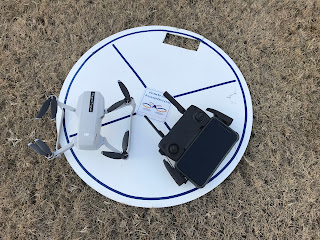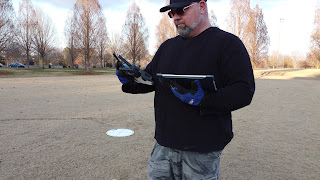A Comprehensive Guide to Choosing the Best Drone for Your Needs - 009
Talk about a soapbox issue, choosing the best drone for your needs is one of those topics. I’m frequently asked about drone recommendations from students in our commercial certification prep and flight training classes. Some have said to me, “When I save up enough money to buy X drone, then I’ll start my business.” IMHO, this is Bull-Hockey!
Some people have the need to be the “trailblazers” when a new product comes out on the market, to each their own. I was guilty of this mentality in high school when we would debate the 0 to 60 (mph) times of the latest sportscars on the market. Someone would have the latest news from one of the magazines stating something like, “Did you hear that the new engine in the Mustang beat last year’s model by .2 seconds?” While there is a place for the “latest and greatest,” purchases should be made objectively by asking, “Will the feature(s) enhance what it is I’m trying to do with it (FPV drone racing, high wind tolerance)? Will this drone make my flying better (stabilization, gimbal, programmable maneuvers)? As a commercial drone pilot am I turning away business without having a specific deliverable (thermal, mapping)?”
Before we get too far ahead of ourselves, we recommend your first drone be a beginner drone. We are not recommending a no-name, or odd names that seem to originate from China, but a basic model, like the starter drone from one of the top 5 producers. * Entry level drones from the big five will have enough bells and whistles, like GPS stabilization, camera gimbal, and Apps that translate to more expensive models.
It goes without saying, learning to fly a drone comes with its risk, like crashing. Do you want to crash a $1,200 aircraft or one that cost a few hundred dollars? In our training we use refurbished drones that cost three to four hundred dollars. If we crash, it’s a bad day, but not a horrible day (I realize this is sliding scale depending on a person’s financial situation). One of our students liked the fact he could learn to fly using our training drone and said, “I would much rather crash your drone than the expensive one I just bought.” I had to laugh at his observation and crossed my fingers he wasn’t on a “fly and destroy” mission.
I use my training drone for commercial gigs, and it does a fine job, especially since most photos and video end up on the internet. IMHO, internet video of 1080P and 12 MP still photos fit the bill. Speaking of video, have you ever tried working with 4K or better video? Most computers will, at best, process video at a Snail’s pace. Who wants to get into a new hobby or business and find out not only do you have to buy a drone, but you also must buy a computer to edit those darn videos.
However, there is a place for new equipment, and you may be itching for a more sophisticated drone. Say you want to do some 3D modeling, high Mega-Pixel (MP), optical zoom, or work with a surveyor using a Real Time Kinematic (RTK) drone.
When it comes to gimballed cameras, a fully articulating gimbal is the best for aerial photos and especially video. A fully articulating gimbal gives you those smooth looking video shots you see on the internet, this includes during turns and altitude changes. Be careful, some drones have a gimbal that only works in the one direction or has a hybrid solution of digital stabilization. Now, if FPV drone racing is your focus, then a fixed camera is desirable, as it adds to the realism while using FPV googles. I accidently bought a drone that stabilized shots in pitch but didn’t have lateral stabilization. We now use that drone to show clients differences between manufacturers.
Via an internet search, according to an an article by DroneDJ, the Top 5 Civil Drone Manufacturers of 2022 are: DJI, Parrot, Skydio, Yuneec, XJG and JOUAV.*
On the other end of the spectrum, it’s very tempting to try and save a few bucks on a budget brand. Be careful watching slick commercials on the internet stating that you can purchase a military grade drone (as one example) that’s now approved for civilian use. The video footage looks like you can fight a forest fire, locate a missing person, and take over a third world country by days end. A client brought one of these drones to our flight training event and wanted to get my take on the drone. Trying to be considerate, I told him it was a good basic drone with which to learn some flying skills. However, the only thing the folks that made this drone were good at was mastering consumer psychology. Prior to seeing one in person, I almost pulled out the credit card just to see if it was good as it looked online. Guess you can say the same for online dating photos.
TC Freeman is the Chief Instructor for the RemotePilotAssociation.com and has a passion for helping recreational and commercial drone pilots learn to fly and earn FAA commercial Remote drone Pilot certification through live, hybrid or self-study courses.
*The top 5 drone manufacturers: We don’t receive compensation from any of these companies. DJI, XJG and JOUAV are made in China. Skydio and Parrot are made in the USA and France respectively.
Join us for our annual JUNE-JULY New Membership “OPEN HOUSE,” a FREE-no obligation bi-weekly webinar where we discuss drone business, certification and re-currency. Email us to RSVP.
Copyright 2023, Remote Pilot Association (TC Freeman)



Comments
Post a Comment